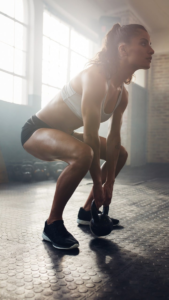Have you ever done a workout at the gym to wake up the next day and struggle sit down on a chair? You were probably experiencing a phenomenon called Delayed Onset Muscle Soreness, or DOMS for short. DOMS refers to the muscle pain, stiffness, tenderness and reduced range of motion that typically occurs after performing an unfamiliar or strenuous physical activity. It usually manifests one to two days after exercise and can persist for several days. DOMS is different to acute muscle soreness, which is the immediate pain or discomfort experienced during or right after exercise. Acute soreness is typically transient and dissipates quickly. For example, acute muscle soreness is the abdominal discomfort you feel during and straight after doing a round of sit ups. After a brief rest, this soreness usually subsides.
So what’s actually causing the muscles to be sore? DOMS involves a complex series of events in response to muscle damage and inflammation caused by new or strenuous exercise. During exercise, muscle fibres experience microtrauma or small tears. This is especially true after eccentric loading exercises, such as the lowering phase of a bicep curl. The microtrauma triggers an inflammatory response within the muscle tissue where inflammatory molecules and cells are sent to the site. The accumulation of these molecules and fluid cause increased pressure within the muscle, which can lead to the stiffness often felt with DOMS. The accumulation of these molecules also activates pain receptors in the muscle tissue, which causes pain on movement. These physiological processes take time to develop and peak, and thus why the symptoms of DOMS are often felt in the days after the exercise. Over time, the damaged muscle fibres undergo repair and remodelling, which leads to the synthesis of new muscle fibres. With repeated exposure to similar exercises, the muscles adapt by becoming stronger and more resistant to future damage.
While DOMS can be uncomfortable, it is usually a positive sign that indicates that your muscles are healing into a stronger state than before the activity. As you become more accustomed to the activity, your muscles will adapt, and you will experience less discomfort. And when that happens, take it as a sign to step it up and push yourself with the next round of squats.






